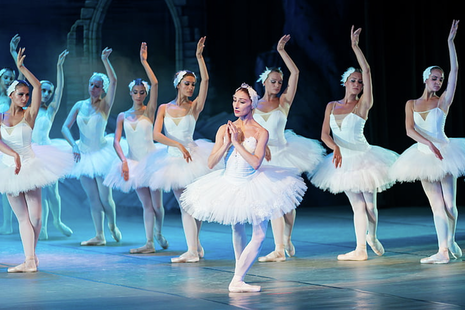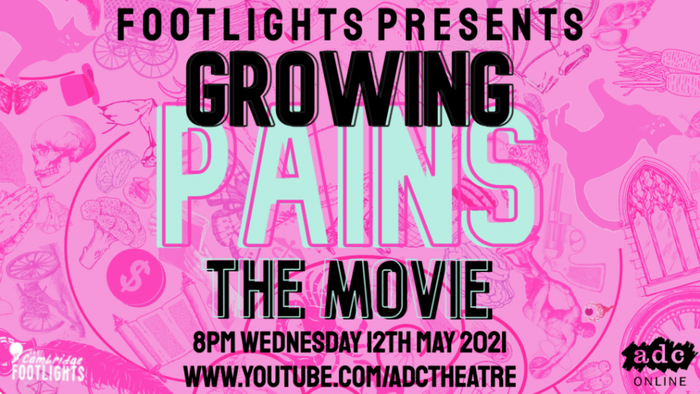Point(e) of Entry
In the first of her series on dance in the time of Covid, Ellie Hunt reflects on ballet: its connotations and its eternal relevance

Music and movement are universal languages. Yet ballet, an art that combines the two, continues to be seen as exclusionary and irrelevant. Ballet has shifted with the centuries, but it cannot shake its origins: the court of the ‘Sun King’, Louis XIV. And the gatekeepers posted along those palace walls were very good at their job.
Ballet has long been associated with the elitism of the upper classes; the opera house, like the court, was often the battle ground where they waged their social warfare. What’s more, the many chapters of ballet’s varied history are scarred and smeared with issues, some resolved, some still haunting its shadowy backstage realms.
“The opera house, like the court, was often the battle ground where they waged their social warfare”
Although ballet has come far in terms of access, it still has a long way to go. But the gates are slowly opening. Information and insights events, scholarships, cinema screenings, tours, student ticket schemes, and engaging with new digital platforms has opened ballet up to a wider audience than ever before. Like most other performing arts, 2020 was not a good year for ballet. However, these creative industries came up with a creative solution: streaming services.
The closest most of us probably came to a live dance performance this year was watching our neighbour do their online Zumba class every Thursday evening from the living room window. But by taking to our televisions, ballet got our attention. Companies around the world dug through their archives and broadcast filmed performances of some of their greatest productions – the perfect antidote to lockdown ennui. Looking at the Royal Ballet alone, over Christmas they gave us a plethora of ballet and opera performances across Netflix, Youtube, Facebook, and the BBC. However, their widest selection of offerings was to be found on Now TV and, most importantly, Sky Arts – a channel that moved to Freeview last September. Ballet has never had a fuller house, even though its auditoriums are empty.
Many of these streaming programs are still running, although with theatres beginning to open up again the range of productions is now less varied than it was at the height of the pandemic. I would love to believe that more people gave ballet a chance during lockdown, or that someone caught it while flicking through the Christmas television offerings and was inspired, moved, or, just for a moment, completely transported. I hope more people will have seen ballet for what it truly is, beyond the off-putting opulence of the opera house, the daunting terminology, or the fear of not ‘getting it’. At its core, ballet is about stories. And, this year, we have needed them more than ever.
“I would love to believe that more people gave ballet a chance during lockdown”
Of course, ballet is an art form that is constantly evolving and not every ballet today has to tell a story. But, nevertheless, when most people think of ballet they conjure up a very specific image. Often that image is tied to ballets such as Swan Lake, Sleeping Beauty, or The Nutcracker – three of the most enduring ballets of all time. These are story ballets; a narrative drives the piece forward, while the movements, music, set, props and costumes all help the audience feel immersed in that world. These tales are timeless, and there’s a reason they’re still staples of every major company’s repertoire.
The fact we still recycle pieces from hundreds of years ago leads people to believe ballet is stale, irrelevant, and unchanging. But story ballets are having a 21st century renaissance. I want to look at some of the best escapes these lockdown screenings gave us, the stories that offered the best point(e) of entry for anyone new to ballet.
Christopher Wheeldon has truly left his mark on what a story ballet can be in the 21st century. He is a prolific choreographer in very high demand. He was the natural choice to direct and choreograph the 2015 Broadway adaptation of the classic Gene Kelly musical An American In Paris. I love the original film and was devastated to have missed its West End run and nationwide cinema screenings in 2017. But thankfully I caught its brief 24-hour run on Youtube in November.
Taken from fact this time instead of fiction, Cathy Marston’s first full-length ballet to grace the Royal Opera House’s mainstage, The Cellist, was based on the life of British cellist Jacqueline du Pré. Its run of live performances was cut short, but thankfully it was one of the first pieces the Royal Ballet livestreamed last June. This masterful and haunting performance, carried by Lauren Cuthbertson and Marcelino Sambé, sees music itself manifest as one of the main characters in the narrative; Sambé, the male lead, dances the role of du Pré’s cello. Not only is the artist-muse relationship complicated here, but the gender roles of one of ballet’s central elements –the pas de deux (the duet between the male and female leads) – also undergoes a fascinating reversal.
But it is only right to begin with Wheeldon’s Alice’s Adventures in Wonderland in a year where it feels like we have truly gone through the looking glass.
 News / Cambridge academics stand out in King’s 2026 Honours List2 January 2026
News / Cambridge academics stand out in King’s 2026 Honours List2 January 2026 Interviews / You don’t need to peak at Cambridge, says Robin Harding31 December 2025
Interviews / You don’t need to peak at Cambridge, says Robin Harding31 December 2025 Comment / What happened to men at Cambridge?31 December 2025
Comment / What happened to men at Cambridge?31 December 2025 News / Varsity’s biggest stories of 202531 December 2025
News / Varsity’s biggest stories of 202531 December 2025 Features / “It’s a momentary expression of rage”: reforming democracy from Cambridge4 January 2026
Features / “It’s a momentary expression of rage”: reforming democracy from Cambridge4 January 2026










